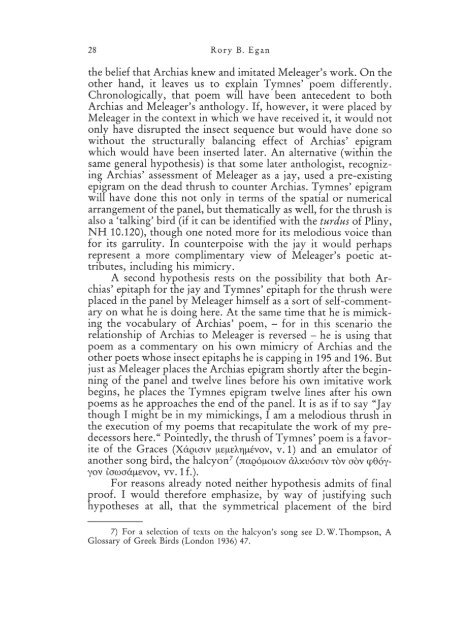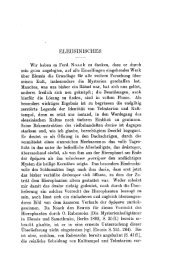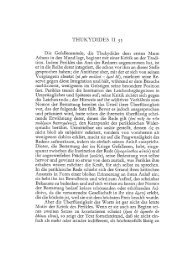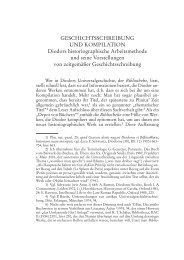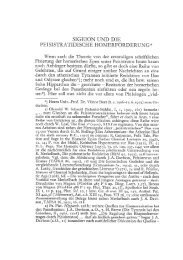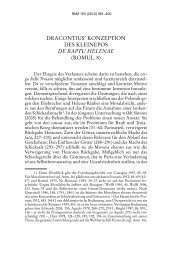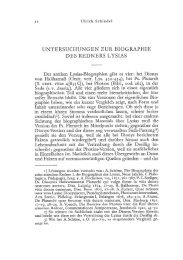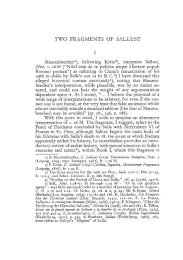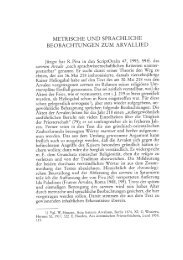ARCHIAS, MELEAGER, TYMNES: DEAD BIRDS IN CONTEXT
ARCHIAS, MELEAGER, TYMNES: DEAD BIRDS IN CONTEXT
ARCHIAS, MELEAGER, TYMNES: DEAD BIRDS IN CONTEXT
You also want an ePaper? Increase the reach of your titles
YUMPU automatically turns print PDFs into web optimized ePapers that Google loves.
28 Rory B. Egan<br />
the belief that Archias knew and imitated Meleager's work. On the<br />
other hand, it leaves us to explain Tymnes' poem differently.<br />
Chronologically, that poem will have been antecedent to both<br />
Archias and Meleager's anthology. If, however, it were placed by<br />
Meleager in the context in which we have received it, it would not<br />
only have disrupted the insect sequence but would have done so<br />
without the structurally balancing effect of Archias' epigram<br />
which would have been inserted later. An alternative (within the<br />
same general hypothesis) is that some later anthologist, recognizing<br />
Archias' assessment of Meleager as a jay, used a pre-existing<br />
epigram on the dead thrush to counter Archias. Tymnes' epigram<br />
will have done this not only in terms of the spatial or numerical<br />
arrangement of the panel, but thematically as well, for the thrush is<br />
also a 'talking' bird (if it can be identified with the turdus of Pliny,<br />
NH 10.120), though one noted more for its melodious voice than<br />
for its garrulity. In counterpoise with the jay it would perhaps<br />
represent a more complimentary view of Meleager's poetic attributes,<br />
including his mimicry.<br />
A second hypothesis rests on the possibility that both Archias'<br />
epitaph for the jay and Tymnes' epitaph for the thrush were<br />
placed in the panel by Meleager himself as a sort of self-commentary<br />
on what he is doing here. At the same time that he is mimicking<br />
the vocabulary of Archias' poem, - for in this scenario the<br />
relationship of Archias to Meleager is reversed - he is using that<br />
poem as a commentary on his own mimicry of Archias and the<br />
other poets whose insect epitaphs he is capping in 195 and 196. But<br />
just as Meleager places the Archias epigram shortly after the beginning<br />
of the panel and twelve lines before his own imitative work<br />
begins, he places the Tymnes epigram twelve lines after his own<br />
poems as he approaches the end of the panel. It is as if to say "Jay<br />
though I might be in my mimickings, I am a melodious thrush in<br />
the execution of my poems that recapitulate the work of my predecessors<br />
here." Pointedly, the thrush of Tymnes' poem is a favorite<br />
of the Graces (XUQLGLV ~E!-lEA.l"]~EvOV, v. 1) and an emulator of<br />
another song bird, the halcyon 7 (:n:aQo~OLov


